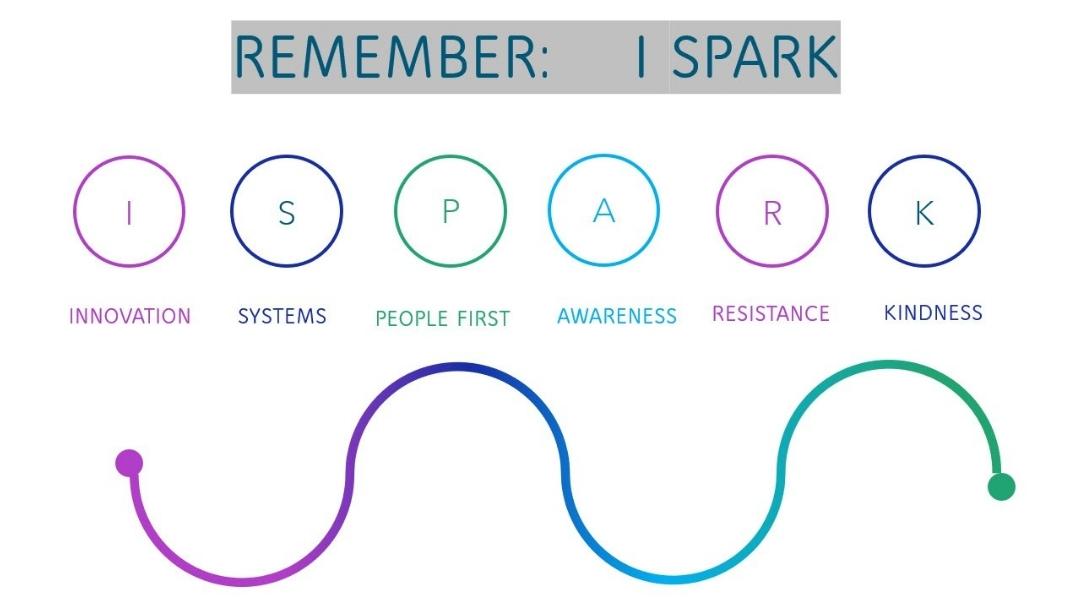At times organizations are only developing their Emerging Leaders with Leadership Development and Coaching. Some C Suite Leaders of the organization say “that’s not for me, it’s for them.
What I find when doing organizational assessments is that the same basic skills that every leader must get better at are what leaders at all levels struggle with. It’s applying the basics of developing a Team, building a culture, and getting to honor and know each and every person that works with us. It’s soft skills like communicating clearly and respectfully and holding each other accountable. It is finding out the heart and minds of the people that work with us and for us. To do that we must cultivate a coaching and mentoring attitude. In order to do that you must have each person’s trust.
When distrust is the default – we lack the ability to debate or collaborate.
Edelman Data & Intelligence (DxI)
As a leader of any level, what impacts your ability to trust someone? Do you start with an even playing field where you are open and accepting or are you more inclined to reluctantly accept what is being shared and need to learn more? There is no right or perfect approach the key is to be aware of how you approach to trust and what is needed to be trusted by each other.
Edelman Data & Intelligence (DxI) has been conducting annual trust surveys for over 20 years. For the 2022 Edelman Trust Barometer, data was gathered from survey results obtained in November of 2021, with input from over 36,000 respondents from 28 countries.
The findings:
- Nearly 60% of the respondents have the default tendency to distrust and require more evidence
- Distrust is now society’s default emotion
- 64% say it’s to a point where people are incapable of having constructive and civil debates
- Gone is the ability to collaborate on differences
- 60% will choose a place to work based on their beliefs and values
Having over half of your colleagues/team members lacking the ability to trust certainly impacts your work culture as trust is the essential ingredient for building strong teams, supporting common goals, and producing results.
As a leader you have the ability to impact trust levels. Some ideas include:
- Share your expectations (and live them)
- Be authentic and transparent
- Mean what you say
- Keep confidences
- Follow through on your commitments
- No hidden agendas are allowed
- Don’t disregard morale issues
- Build relationships and take the time to “know” your colleagues/direct reports
- Listen
- Don’t ignore unhealthy conflict
- Provide healthy, constructive feedback (with specifics)
- Solicit feedback
- Utilize Emotional Intelligence
Invest in building trust. When trust levels are lacking, stress, turnover, morale, gossip, productivity, and satisfaction ratings are impacted. When trust levels are high, the ability to collaborate, achieve results, and be open and vulnerable are also high.
When we truly care about a culture of trust we create an environment where each person is honored and respected for the skills, abilities and talents we have.
We have a learning culture where the development of our mindset is a top priority. We help each other achieve their desired goals and objectives. It’s not just about me, me, me it’s about we.
Could you do more to improve the ability to trust? Could your peers?
Some tips for emerging leaders that you should learn
If you read and study the Five Behaviors of a Cohesive Team by Patrick Lencioni you find there are concrete areas to measure and develop. The key is to 1) know what they are 2) measure the areas 3) develop plans to close the gaps that exist in each area. The areas are: Trust (what this entire article is about, Conflict (being able to address issues without fears or repercussions 3) Accountability (being accountable to each other no matter what level or title 4) Commitment (being committed to common goals and objectives 5) Results
There is a specific process to building and team by undoing The Five Dysfunctions. It’s best to just start. Find out where you are with being trusted as an individual or organization. Do an assessment to find out where you are. Sometimes this has to be done with outside expertise because who would open up with internal colleagues? Is there even enough trust that when you run the assessment at all? What are the barriers getting in the way? Is the organization safe and free to be vulnerable with each other? Can a problem be identified without people getting upset and angry to the point of
holding grudges for a long time? I recently had a client who said “we can’t discuss that hear because I am afraid of how Senior Management may react”. Once you start the process it’s best to be open and honest with each other about what was heard. This gives permission for others to do the same. If the CEO or head of a department or organization shares what they heard and that they are starting a process to correct some things then it gives others permission they too can have a problem in their team and can work on it to correct and make it better.
For example, there are many leaders who don’t understand how their roles and those of their team connect to the overall goals and objectives of the company. Even when the leader who runs the organization does they don’t connect the dots for those that work for them. So when doing a survey or assessment it comes out that things like communication isn’t clear, we don’t know where we are ultimately going, and we don’t fully understand our role. Instead of being defensive about this, a leader needs to take charge, be open about the gap that was identified, and talk about the future with clarity.
Another point to be clear with is that everyone is responsible for the change that must occur. That means everyone no matter what level or role. A way to further understand this point is discussed in a book by John Miller called the QBQ. I love this book because it clearly states we all own everything that happens. It is our responsibility to work on the problem. The book gives examples of questions we each must ask, what can I do to solve this issue, how can I help and provide support or a solution? Not questions like why is this happening and who is to blame. If you do anything with this article purchase that book and implement the QBQ throughout your organization. What we’ve seen is that when these processes are started there is immediate progress made. Not only with trust but all of the other four dysfunctions begin to improve. Remember this is a process and not an event. What this means is that it’s like going to a gym to build physical muscles. It takes time and effort. Leadership, Team and Organizational muscles are the same. They must be developed over time. How we communicate, handle conflict, set our vision, mission and goals and hold each other accountbale is a career-long process.










